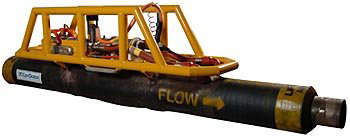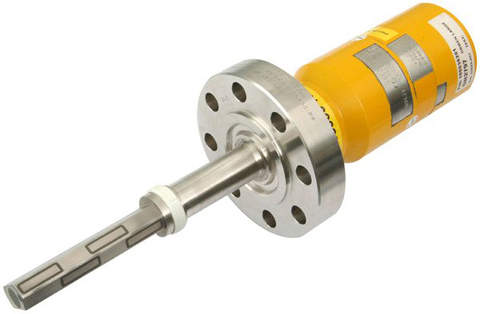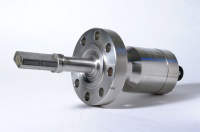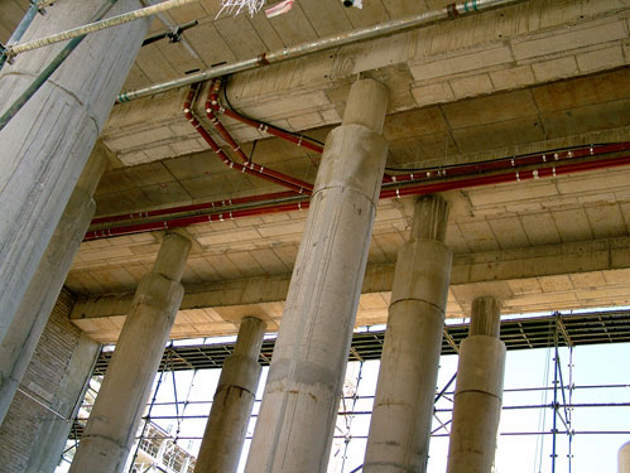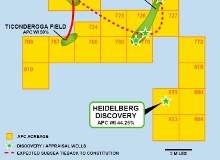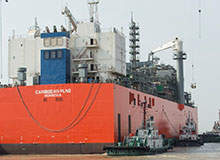Roxar provides a range of monitoring sensors to detect corrosion, sand erosion, pressure, temperature and flow momentum in pipelines and other applications in the oil and gas industry.
Non-intrusive corrosion monitoring system
Roxar’s CorrOcean field signature method (FSM) system is a non-intrusive system for monitoring internal corrosion in pipes, pipelines or vessels directly at the pipewall. The FSM system offers high accuracy combined with the ability to detect localized attacks at the monitored object. It can be used for the internal corrosion monitoring of the following:
- Subsea pipelines and flowlines
- Underground pipelines
- High temperature applications in refineries
- Applications in sour (high H2S) applications
- Process piping and pipelines
Subsea field signature method for pipeline corrosion monitoring
Roxar’s FSM system has been used worldwide by leading oil, pipeline and pipeline service companies to detect corrosion in a wide range of critical pipeline applications. Today, it continues to represent the pinnacle of corrosion monitoring technology.
FSM detects metal loss, cracking, pitting and grooving due to corrosion by detecting small changes in the way electrical current flows through a metallic structure. With FSM, sensing pins or electrodes are distributed over the area to be monitored, with a typical distance between pins of 2-3 times the wall thickness. An initial voltage measurement is taken, and subsequent changes in electrical field pattern are detected and compared against the initial measurement to infer structural changes in the monitored area.
FSM corrosion monitoring system with graphs, trends and rates
Roxar’s FSM corrosion monitoring system presents graphical plots, which indicate the severity and location of corrosion, and calculate corrosion trends and rates. Both sensitivity and repeatability for general corrosion for online FSM systems are typically better than 0.1% of remaining wall thickness, which means that the actual sensitivity increases as the corrosion attack increases.
This technology gives good results in a number of areas where UT or radiography are difficult, such as complex geometry (Y-sections), thin walls and high temperature areas. Specialized versions of FSM are available for monitoring subsea, topside, onshore and buried pipes. It is also available as a portable inspection tool called FSM-IT.
Subsea corrosion-monitoring sensors
Roxar subsea SenCorr corrosion-monitoring (CM) sensors are high-sensitivity, long-life corrosion sensors designed to monitor rapid changes in corrosivity of process fluid. Typical applications include step-out pipelines, manifold flowline inlets, manifold trunkline outlets or direct installation on subsea trees.
Based on the ER principle, Roxar subsea SenCorr CM sensors can detect corrosion rates as low as 0.5mpv within 24 hours. The SenCorr CM can be combined in a common sensor unit with pressure/temperature measurement equipment.
Corrosion monitoring and sand-erosion monitoring
Corrosion monitoring is also often seen in combination with sand-erosion monitoring. The purpose is to monitor the production of sand related to hydrocarbon production, which can cause severe erosion problems in process equipment. Roxar provides an extensive range of products for this application.
Sand erosion sensors
Roxar’s SenCorr sand erosion (SE) sensors measure sand erosion with high accuracy and instantaneous response. Operating on the electric resistance (ER) principle, four independent sensing elements measure increased element resistance as they are exposed to sand erosion. The sensors are compact and rugged, and may be mounted directly on the Christmas tree in order to detect sand production at an early stage, thus minimizing damage to the chokes and valves.
SenCorr SE sensors require no calibration and are unaffected by flow and mechanical noise. For maximum cost effectiveness, sand erosion measurement may be combined with single or dual redundant pressure and temperature measurement equipment in a single sensor unit, SenCorr SEPT/SEPTPT.
Subsea pressure and temperature sensors
Roxar’s subsea SenCorr pressure and temperature (PT) sensors are built for long-life operations in harsh subsea production environments. Utilizing well-proven piezo-resistive technology, SenCorr PT sensors maintain extreme accuracy and stability in dynamic temperatures and ultra-high pressures. Both pressure and temperature is measured simultaneously at a common point through a standard bridge coupling, and the pressure signal is coupled with a temperature reading for compensation – eliminating inaccuracies that may occur due to temperature gradients.
SenCorr pressure and temperature sensors are available in a pressure/temperature (PT) version, a PTPT version (dual redundant pressure/temperature) or in combination with our CMPT (corrosion), SEPT (sand erosion) or SenCorr Force (flow momentum) sensors.
Subsea sensors for flow assurance
Roxar’s SenCorr subsea sensors are the catalyst for effective flow assurance. The sensors represent state-of-the-art subsea measurement technology for measuring corrosion, sand production, erosion, pressure, temperature and flow momentum.


